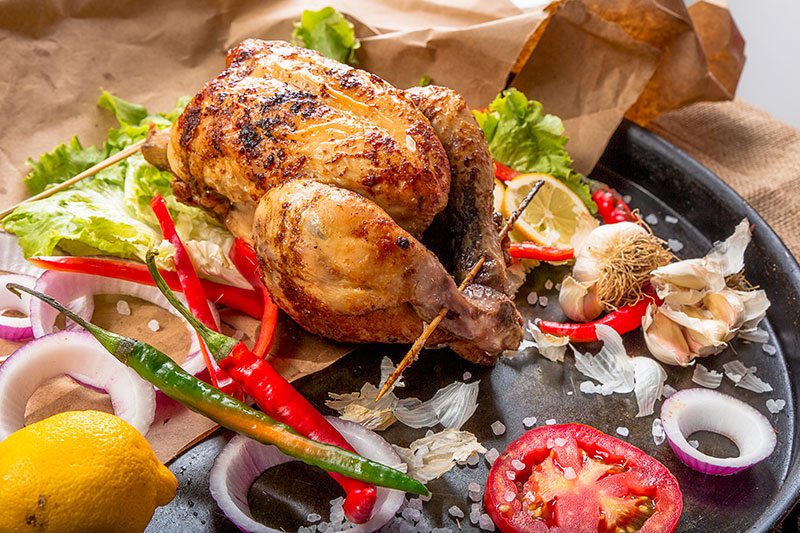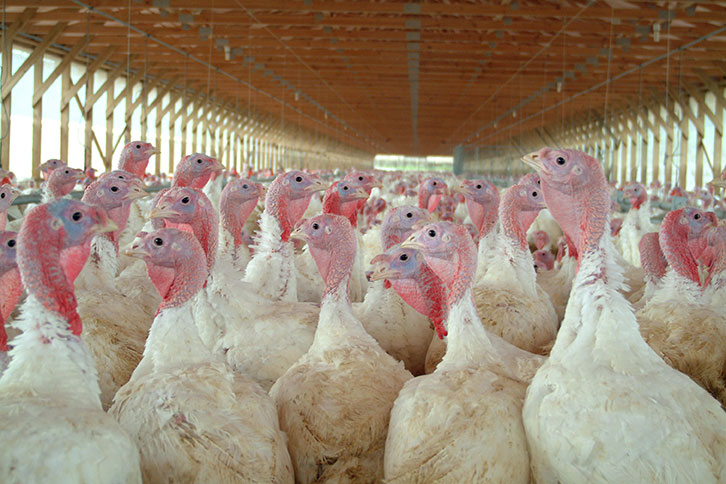Turkey Processing Machines

The turkey is a large bird in the genus Meleagris, which is native to the Americas. One species, Meleagris gallopavo (commonly known as the domestic turkey or wild turkey), is native to the forests of North America, from Mexico, throughout the midwest and eastern United States, and into southeastern Canada. Regarding the name “Turkey”, some speculate that when Europeans first saw turkeys in Amercia, they wrongly identified the birds as a type of geineafowl, which were already being brought into Europe then by Turkey merchants via Constantinople and were nicknamed Thurkey coqs.
The species Meleagris gallopavo of turkeys is used by human for their meat. They were domesticated by the native people of Mexico from 800 BC. It is believed that these birds were then introduced into the US (present day Southwest US) or independently domesticated by the native people then by 200 BC. Turkeys were used for meat by Native Amercians by about 1100 AD and compared to wild turkeys, domestic turkeys are selectively bred to grow larger in size for their mean. Turkeys are usually consumed on special occasions such as Thanksgiving or Christmas.
Top Turkey Producing Countries

As of 2014, half of all global turkey meat output was produced by the United States. In fact some 95 percent of global turkey production takes place in the Americas and Europe. The Americas is clearly the largest turkey region producing 3.45 million tonnes or 61 per cent of the world total in 2012.
On a per capita basis, Israel actually consume more turkey than the U.S. According to U.S. Department of Agriculture data, Israelis ate 28.9 pounds of turkey in 1999, the last year for which statistics are available. That same year Americans ate 17.6 pounds of the mouthwatering fowl. Turkey meat is still mainly consumed in the West and Asia has yet to catch up on turkey consumption.
Turkey Processing Machines

With over 50 years of experience in mechanical engineering and its application in the food processing industry – especially for poultry meat processing, we possess the technical know-how in this fast changing food processing niche. We are probably the best in our chosen field of work and we believe if you partner with us for your needs in poultry meat processing, we will deliver exceptional value to your company in terms of returns and operational efficiency
Not many companies in our industry can claim 50 years of experience under their belt. We are proud to announce that we are one of them. In the 50 years, we have seen first-hand how technologies disrupt the way we run and operate businesses. We have also witness how fast evolving poultry meat processing can be.
In general, most of our customers who require poultry meat processing process chickens, turkeys and ducks. We have extensive experience in this area and in fact we already have top of class poultry meat processing machines that can perform highly specialised task in your food production processes that provides you with high return on investment from lesser reliance on manual labour and the increase output generated by our poultry processing equipments.
Currently our range of poultry meat processing machines can assist you in poultry skinning, poultry de-boning,mid-wing tulip processing, poultry spare-rib cutting and poultry fillet splitting.
Catering to different market demands, we offer different poultry processing machines for different customers or market requirements.
1. Automated Turkey Skinning Machine
Designed specifically to achieve the optimal yield for skinned poultry (turkey), our automatic turkey skinning machine process wet and air chilled turkey. The machines can automatically remove skin from the turkey’s whole breasts, breast caps, split breast bones and whole legs of turkey.
2. Automated Turkey De-boning (Bone removal) Machine
Using our own patented technologies to achieve maximum yield for deboning poultry, our turkey processing equipments can center the bone and push it (turkey thighs and drums) through a hole is the diaphragm which automatically strips off the turkey meat with the highest yield possible.
